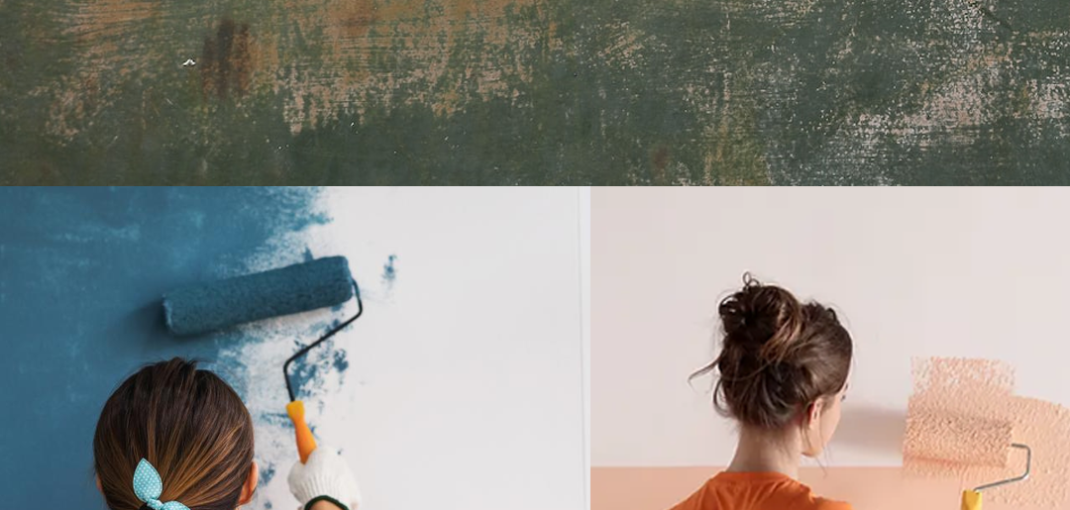Ever thought about picking wall texture paint and choosing the right spice for cooking? Just as a chef adds flavours to create a delicious dish, you can add character to your home with rustic texture paint.
Imagine walking into a room where the walls tell stories of cosiness and charm. That’s what rustic texture paint designs do – they transform plain walls into textured wonders.
In this blog post, we’ll be your guides, sharing five simple steps. Whether you’re new to painting or a seasoned DIY enthusiast, these easy tips will help your home shine with rustic style. Let’s get started on this creative journey together!
Step 1: Determine Your Style Preferences
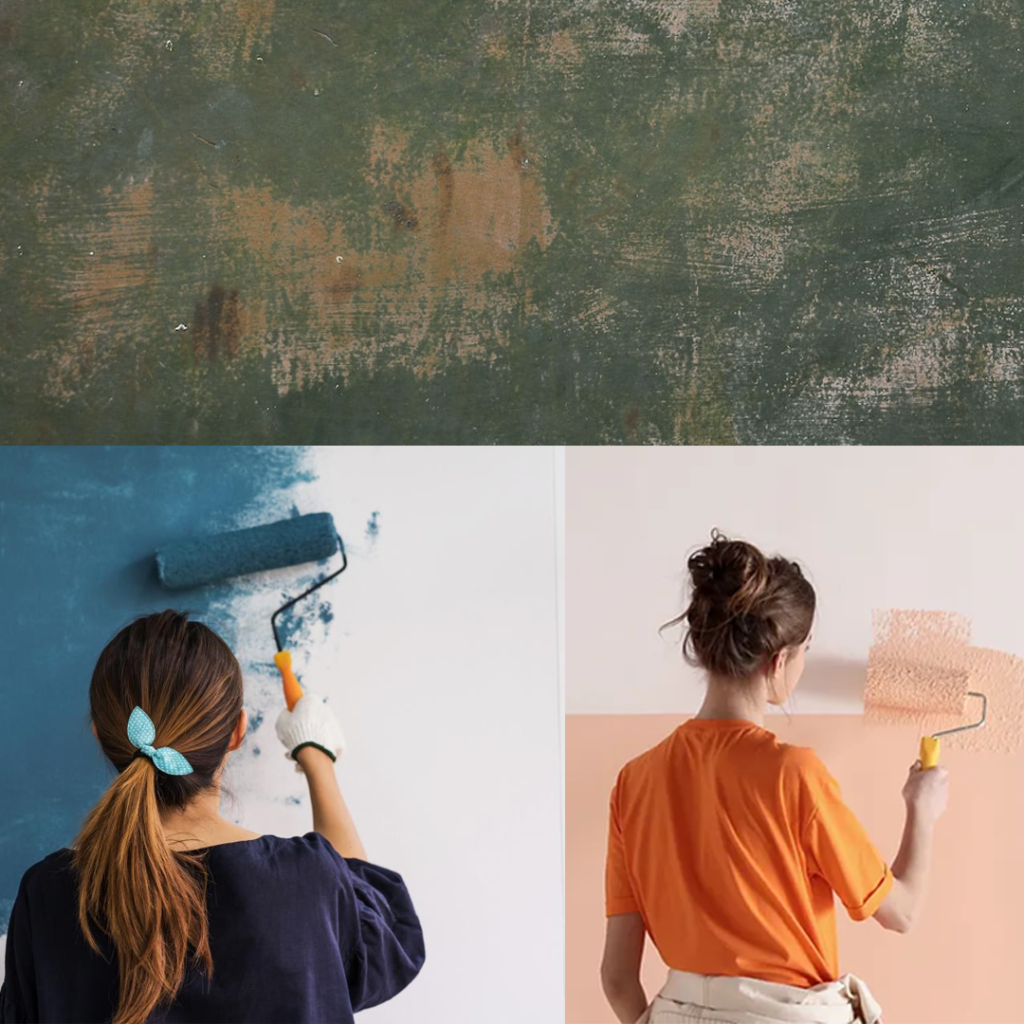
When embarking on the journey to transform your walls with rustic texture paint, the first crucial step is to understand your style preferences. Here’s how to get started:
Self-Reflection: Take some time to reflect on your design preferences. Are you drawn to a classic farmhouse look, an industrial loft vibe, or a cosy cottage atmosphere? Understanding your overarching style will guide you toward rustic texture options that align with your vision.
Inspiration Gathering: Browse home decor magazines, websites, or social media platforms like Pinterest and Instagram to gather inspiration. Pin or save images that capture the rustic textures and elements that appeal to you the most. This will help you crystallize your design direction.
Consider Existing Decor: Think about your existing furniture, decor items, and the overall ambience of the space. Your rustic texture wall paint should harmonize with your current furnishings and colour palette. Take note of any specific textures or materials already present in the room.
Step 2: Consider the Room's Purpose
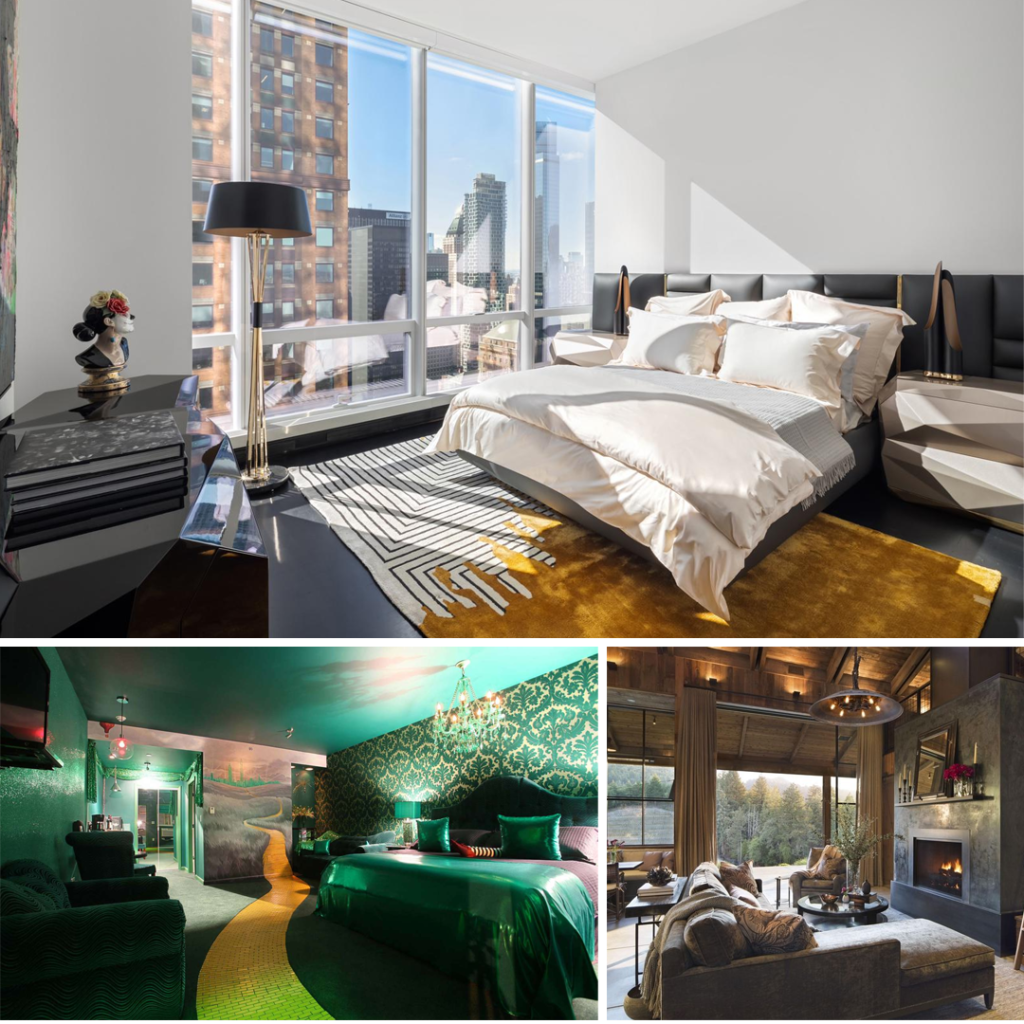
Different rooms serve different functions, and the texture you select should align with the room’s intended use. Here’s how to proceed:
Ambience: Consider the ambience you want to create. For instance, a rustic bedroom may benefit from a more relaxed and cosy texture, while a rustic kitchen might lean toward a durable and practical texture that can withstand cooking-related wear and tear.
Traffic and Use: Assess the level of traffic and use the room typically experiences. High-traffic areas may require textures that are not only aesthetically pleasing but also durable and easy to clean.
Theme and Decor: Reflect on any specific themes or decor elements you plan to incorporate into the room. For instance, if you’re designing a rustic-themed nursery, you might opt for a soft, weathered wood texture that complements baby-friendly decor.
Lighting Conditions: Take into account the room’s natural lighting conditions. Some rustic textures may look different under various lighting, so consider how the texture will interact with both natural and artificial light sources.
Step 3: Explore Colour Options
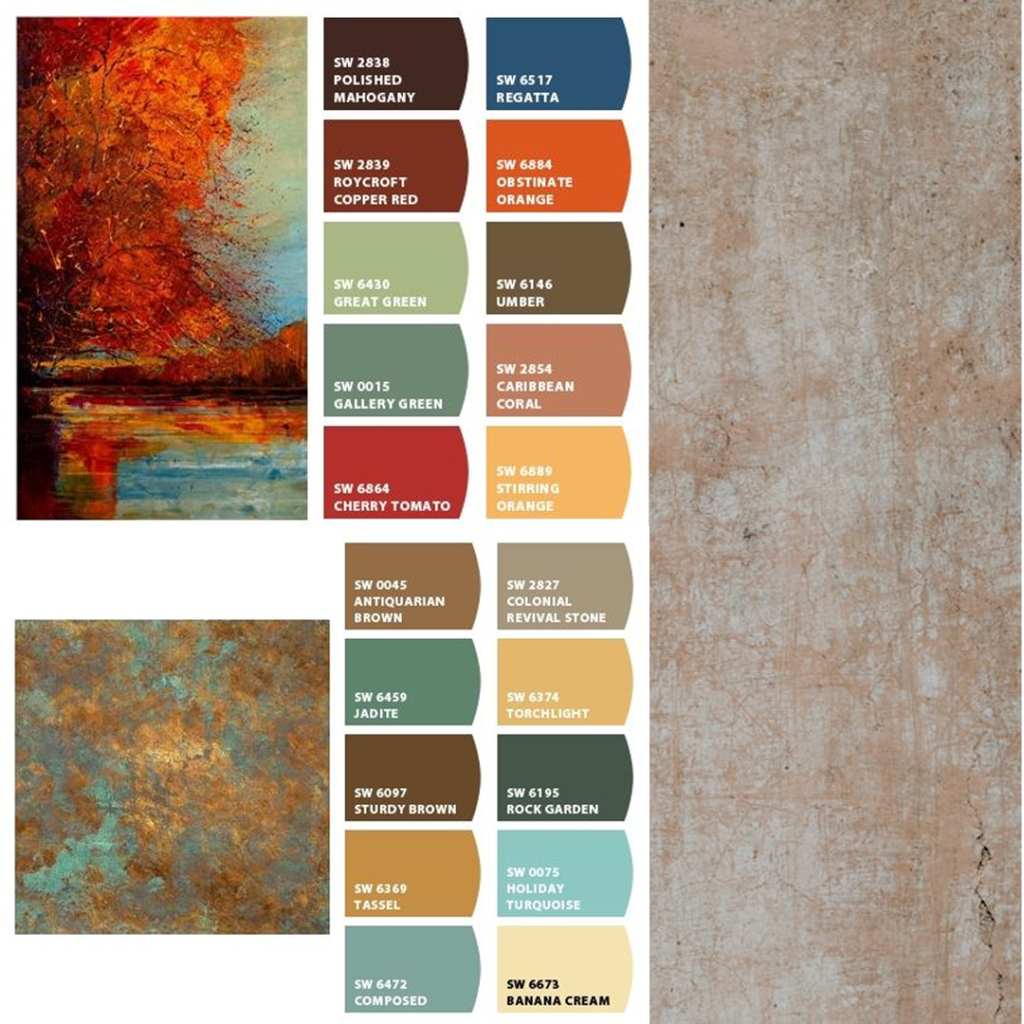
The right colour can greatly impact the overall feel and character of your rustic textured walls. Here’s how to navigate the selection of colours:
Colour Palettes: Begin by exploring rustic colour palettes that resonate with your style. Rustic aesthetics often draw from earthy tones, including warm browns, deep reds, muted greens, and soft blues. These colours can evoke a sense of warmth and comfort, so consider which ones align with your vision.
Complementary Colours: Take note of your existing decor and furnishings. The chosen colour should complement these elements rather than clash with them. Look for shades that harmonize with your furniture, textiles, and accessories.
Sample Swatches: Acquire sample swatches or paint samples of your preferred rustic colours. Testing these swatches on your walls can provide a visual preview of how the colours will appear in your specific lighting conditions and alongside your existing decor.
Consider Trends and Timelessness: While it’s essential to follow your style, it’s also wise to consider whether your colour choice will stand the test of time. Some trendy colours may become dated quickly, so think about the long-term appeal.
Step 4: Evaluate Texture Options
The texture you choose plays a pivotal role in achieving the rustic texture paint designs ambience for your walls. Here’s how to evaluate and select the perfect texture:
Understanding Texture Varieties:
Rustic texture paints offer a wide range of options, each with its unique charm. Familiarize yourself with the various texture varieties:
Stone Texture: Stone textures mimic the solid and enduring look of natural stone surfaces, adding a touch of rustic elegance.
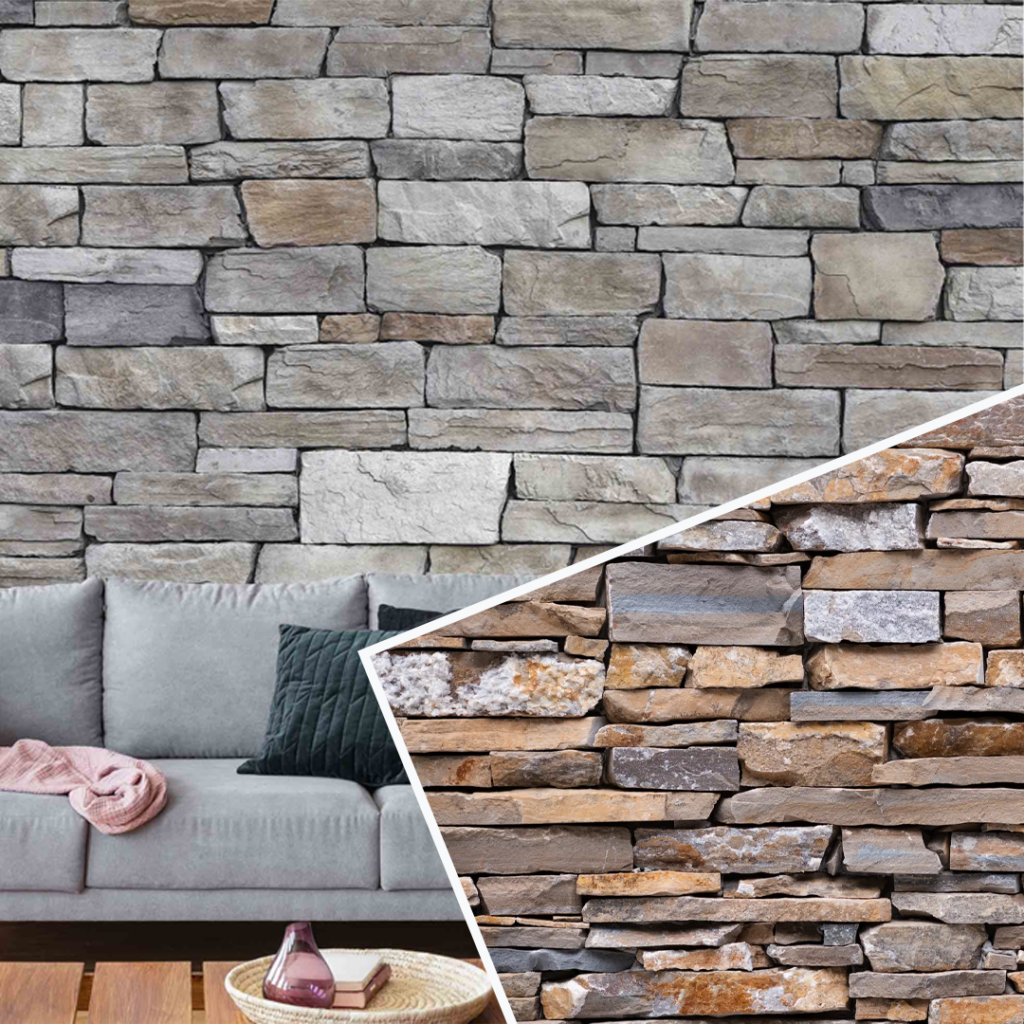
Brick Texture: Brick textures replicate the appearance of exposed brick walls, offering a timeless industrial or vintage appeal.
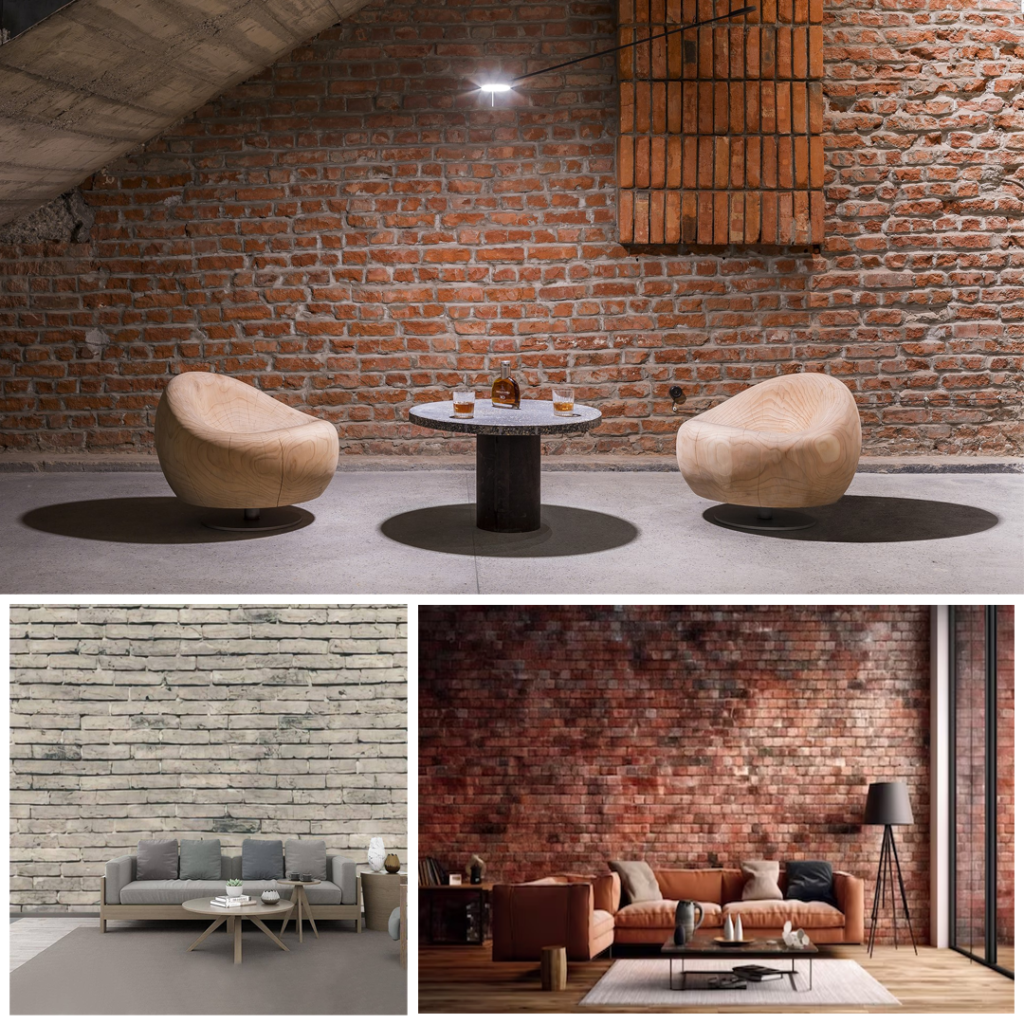
Rustic Metal Texture: Rustic metal textures encompass aged copper, weathered iron, and antique brass, providing an industrial or vintage touch to your walls.
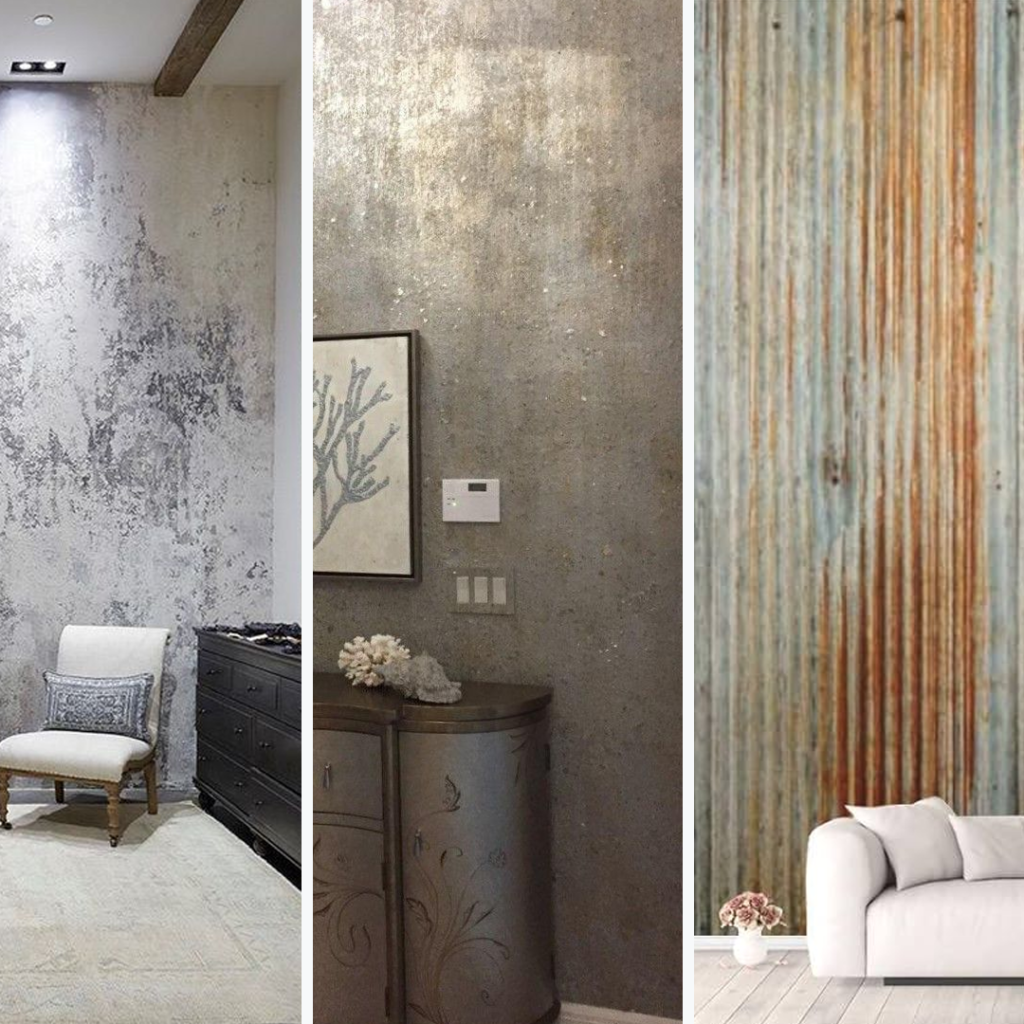
Rustic Plaster Texture: This texture wall mimics the rough and uneven surface of traditional plaster, evoking a cozy and aged atmosphere.
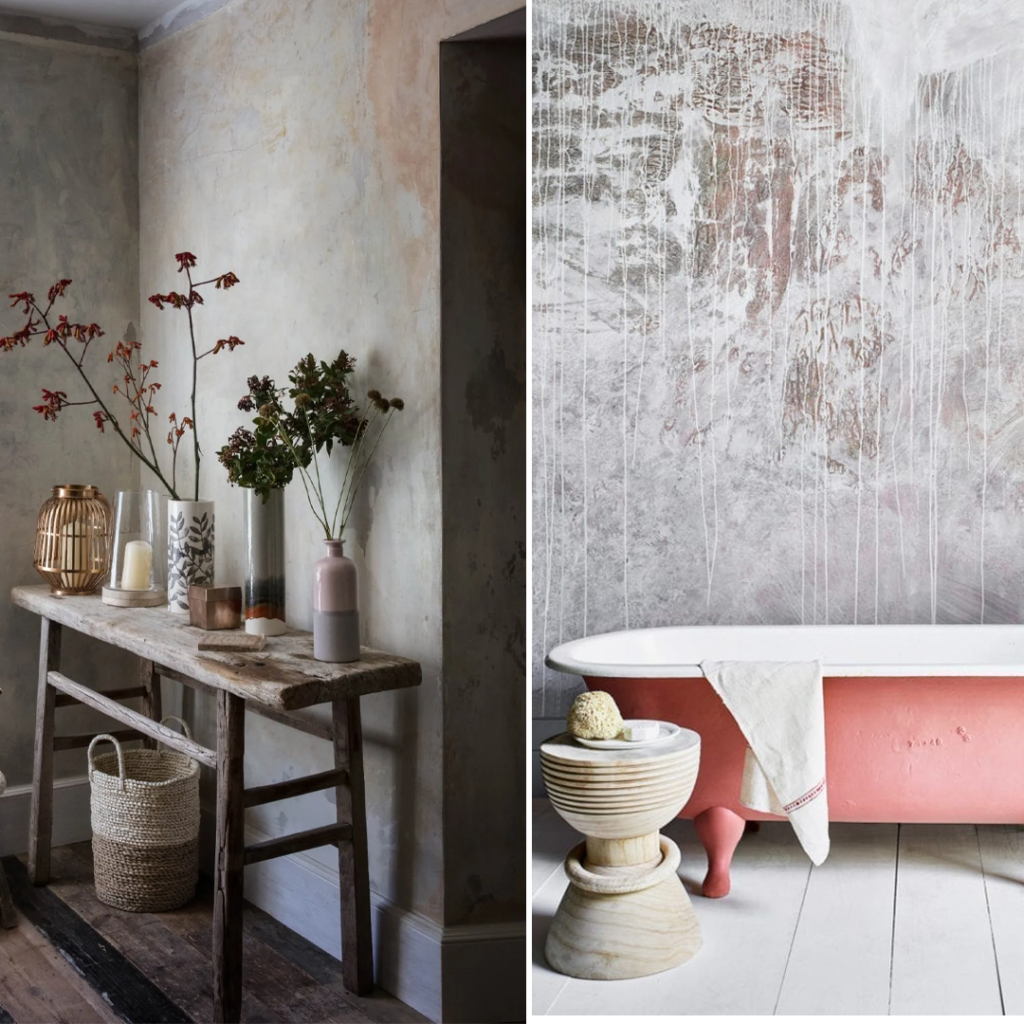
Stucco Texture: Stucco textures create a textured, matte finish that can resemble the rough exterior of Mediterranean-style homes.
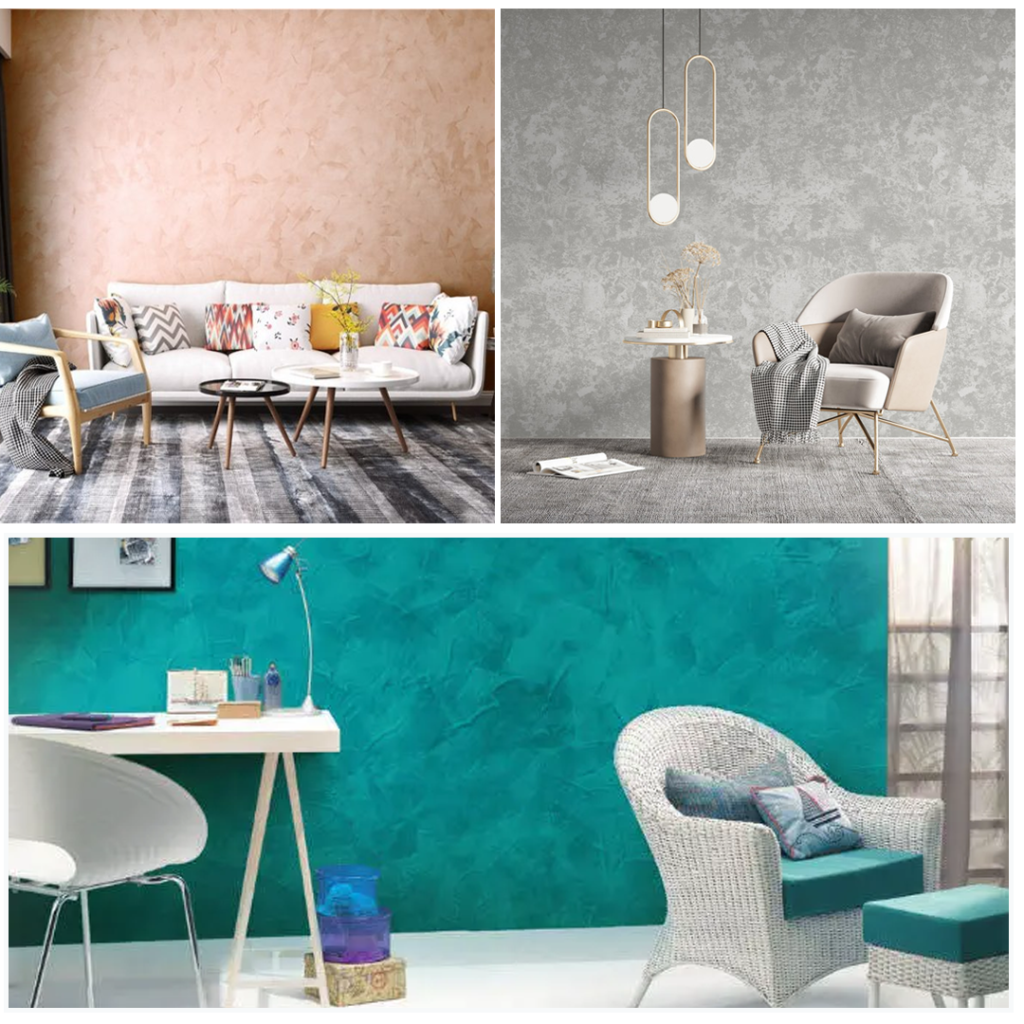
Knockdown Texture: Knockdown textures feature flattened and irregular patterns, adding depth and interest to your walls.
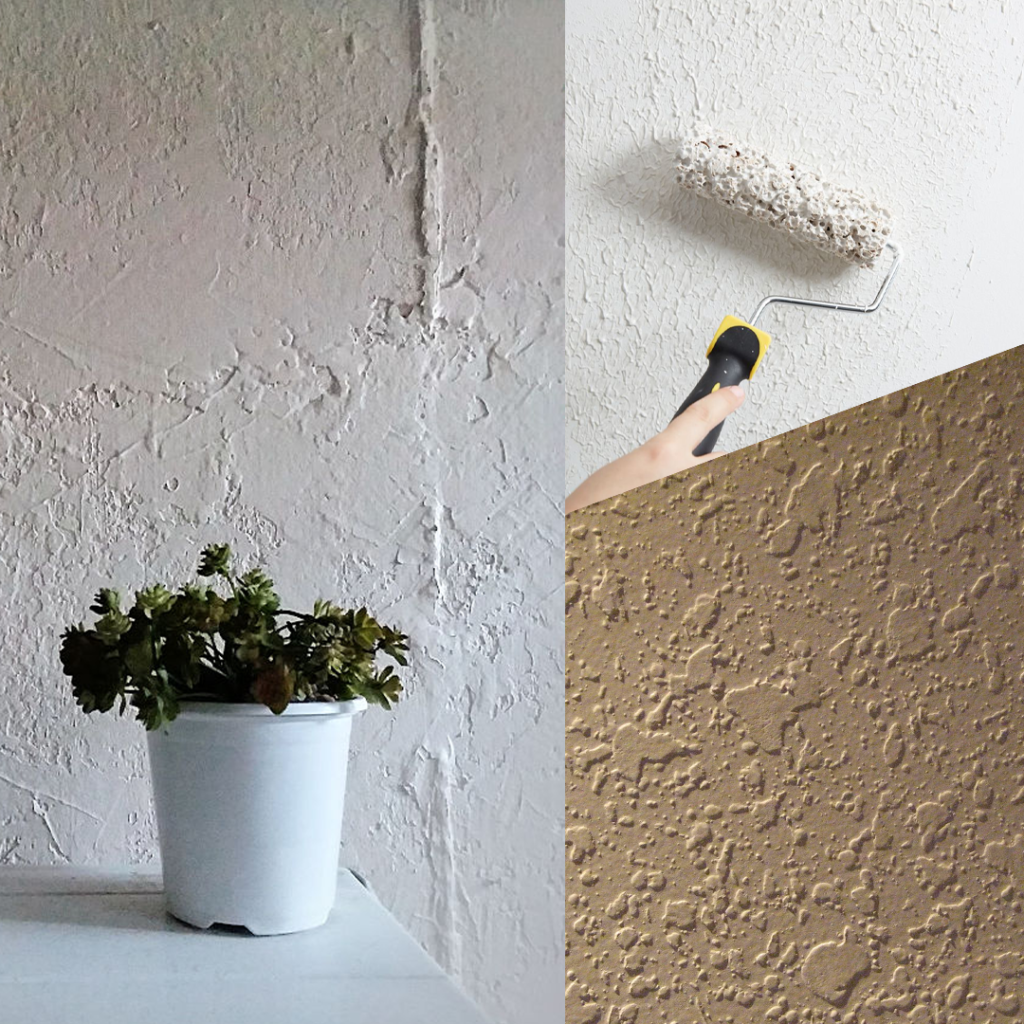
Skip Trowel Texture: Skip trowel textures create a subtle, hand-applied appearance with irregular patterns, ideal for a rustic or Old World look.
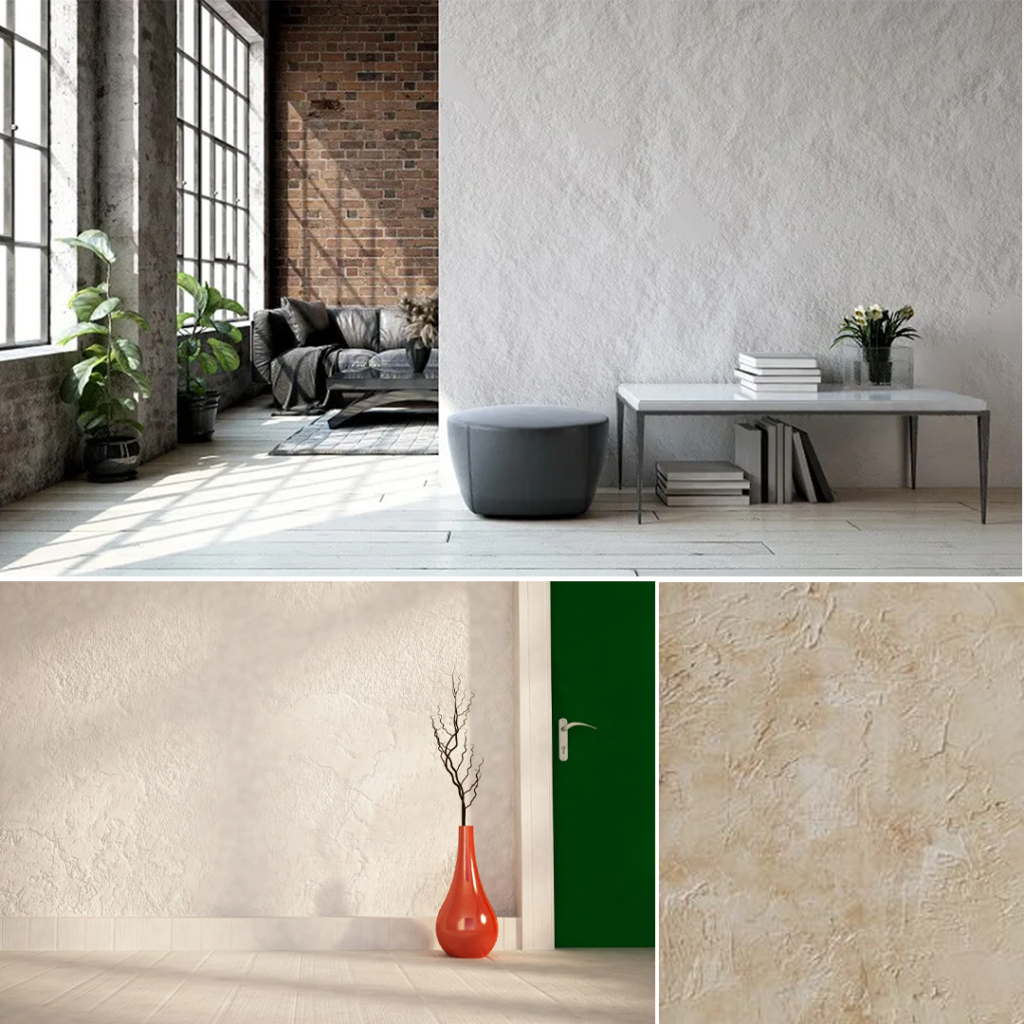
Trowel Texture: Trowel textures involve applying and manipulating the paint with a trowel or spatula, resulting in a textured and rustic finish.
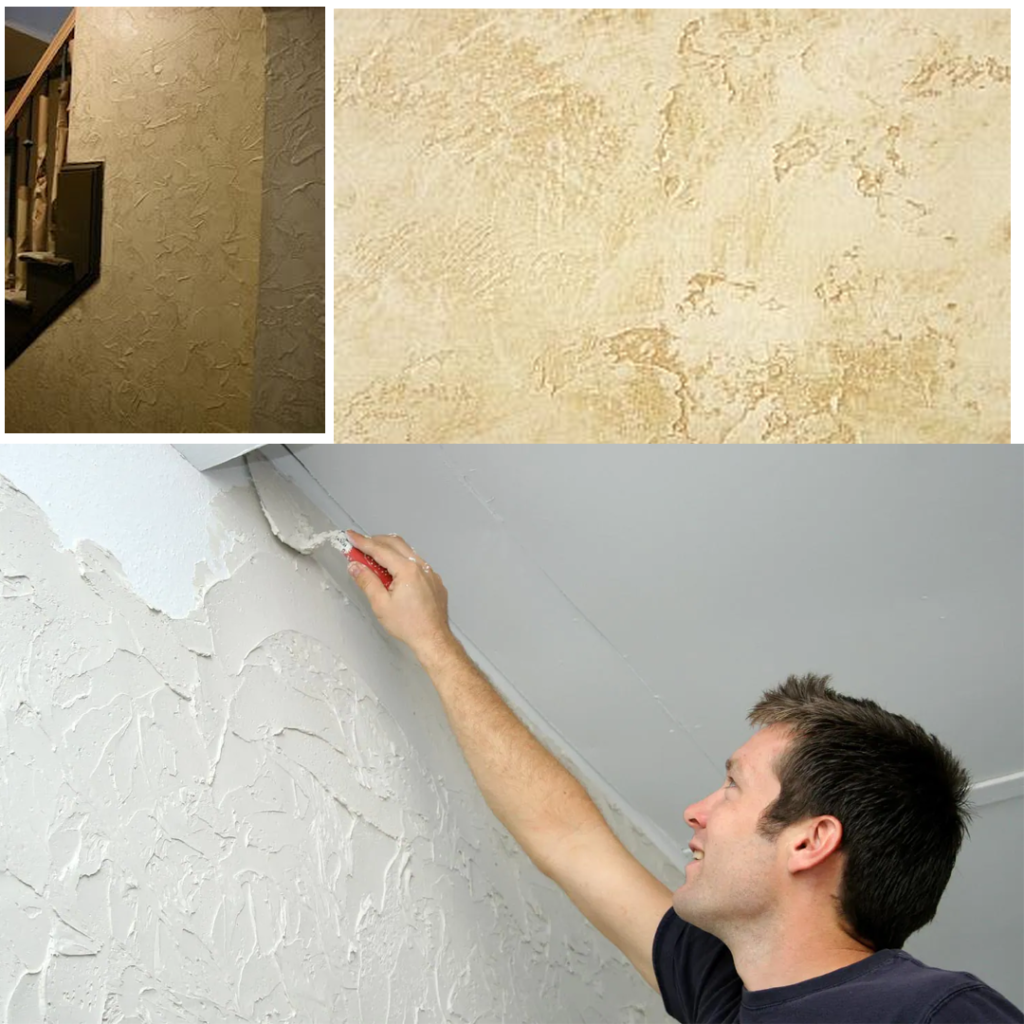
Compatibility with Style
Consider how different textures align with your chosen rustic style. For instance, distressed wood textures often evoke a classic farmhouse feel, while aged metal textures can contribute to an industrial or vintage aesthetic. Assess which textures resonate most with your design vision.
Step 5: Test Samples and Seek Professional Advice
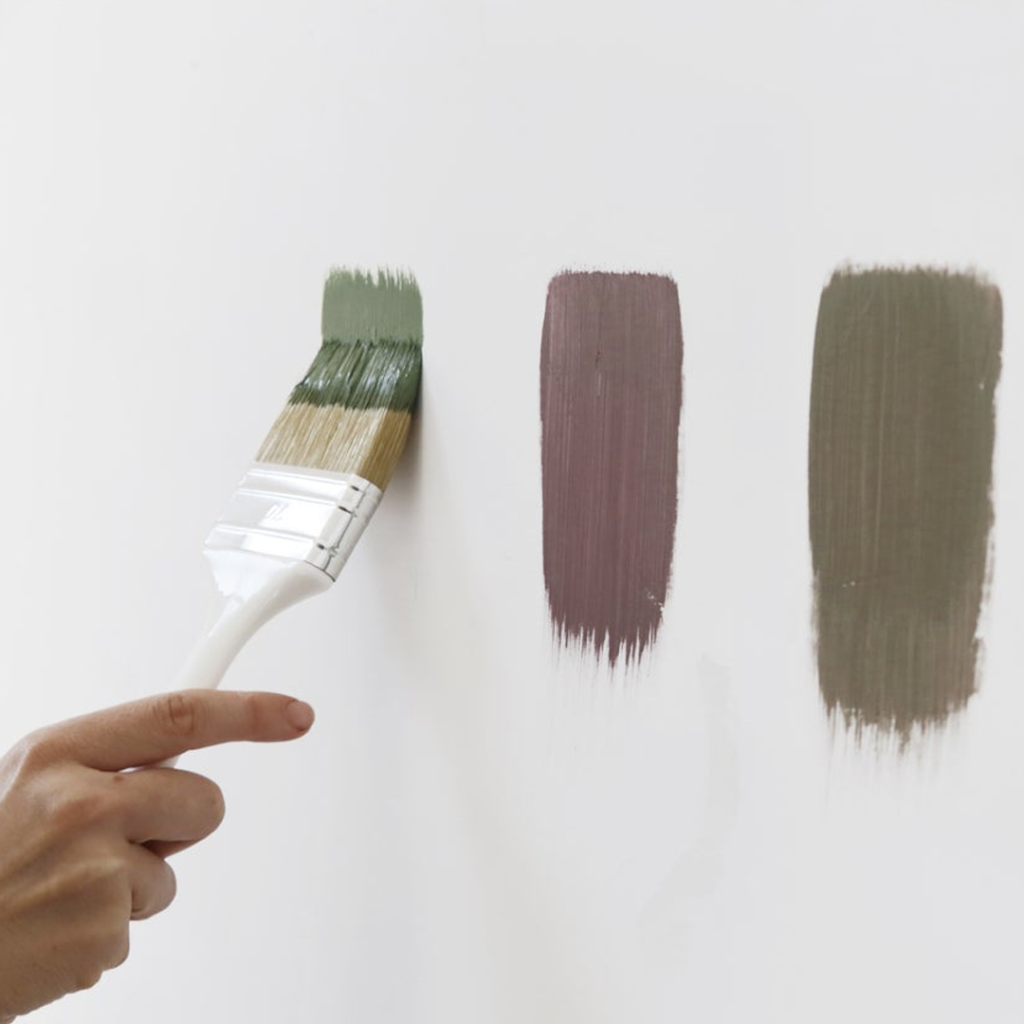
As you approach the final step in selecting rustic texture paint for your walls, it’s essential to refine your choices and gather expert insights.
Here’s how to make informed decisions and ensure a successful outcome:
Sample Application: Before making your final selection, acquire small samples of the rustic texture paints you’re considering. Apply these samples to a section of your wall to observe how they look in your specific lighting conditions.
Comparison: Compare the texture samples side by side to determine which one aligns best with your style, decor, and room ambience.
Long-Term Vision: Think about how the chosen rustic texture paint will fit into your long-term vision for the room. Ensure it remains appealing and relevant for years to come.
Budget Confirmation: Revisit your budget to ensure that the chosen texture paint aligns with your financial plan, including any potential additional costs for materials and labour.
Maintenance Considerations: Confirm that you are comfortable with the maintenance requirements of the selected texture. Some textures may need more care and upkeep than others.
Avoiding Common Mistakes
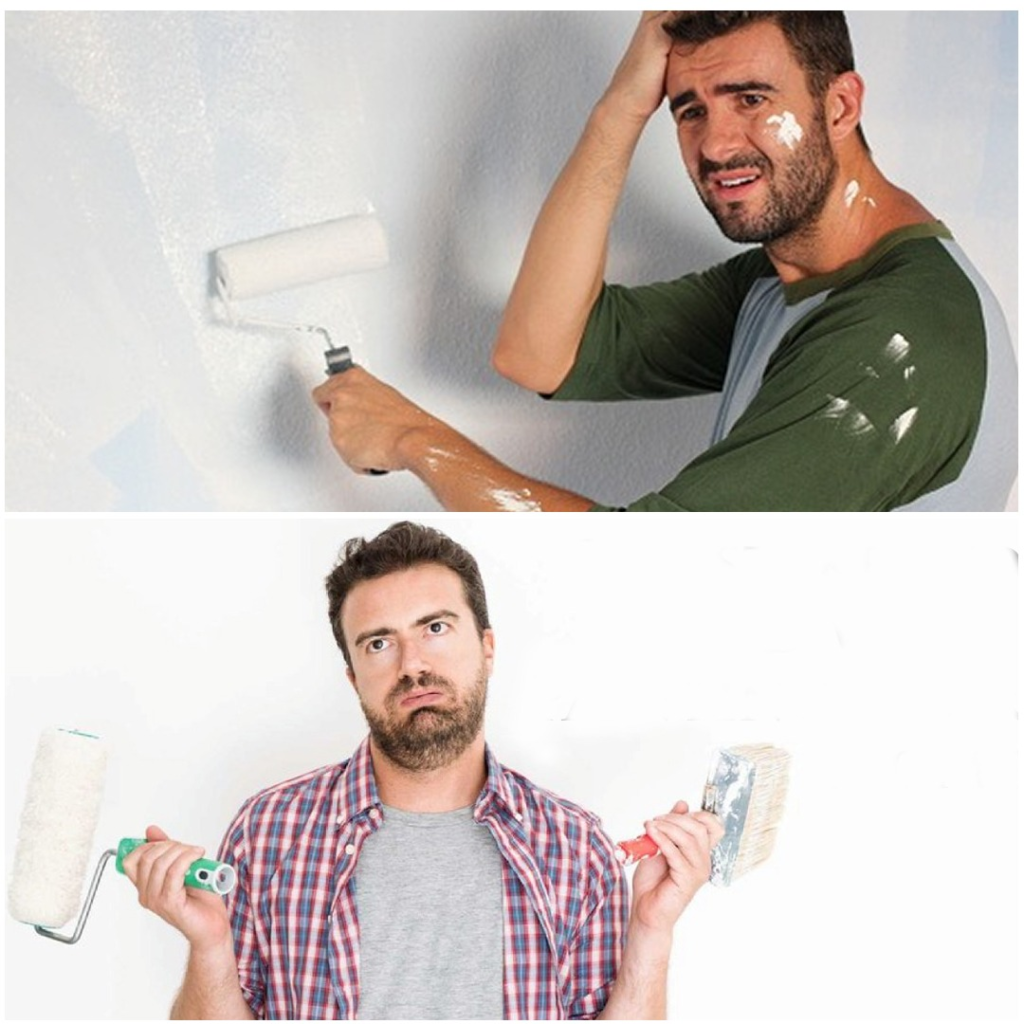
While rustic texture paint can bring beauty and character to your walls, there are common pitfalls to watch out for when selecting and applying it. By being aware of these mistakes, you can ensure a successful and satisfying painting project.
1. Neglecting to Test Samples
One of the most common mistakes is not testing paint samples on your walls before committing to colour or texture. Lighting conditions and existing wall colours can greatly affect how the paint looks. Always test a small section of your wall with your chosen rustic texture paint to see how it appears in your specific space.
2. Skipping Surface Preparation
Proper surface preparation is vital for a successful paint job. Neglecting to clean, repair, and prime your walls can lead to uneven texture application and paint adhesion issues. Take the time to prepare your walls by filling cracks, smoothing rough spots, and priming as needed.
3. Overlooking Lighting Considerations
The lighting in your space can significantly impact the appearance of your rustic texture paint. Natural and artificial light sources can create shadows and highlights that accentuate the texture. Consider how the room’s lighting changes throughout the day and how it interacts with your chosen paint to achieve the desired effect.
4. Not Matching Texture to Style
Different rustic texture paint techniques create various textures, from subtle to pronounced. It’s essential to match the texture style to your overall interior design. For example, a highly textured finish might not suit a modern minimalist space, while a more understated texture could work beautifully.
5. Ignoring Maintenance Requirements
Rustic texture paint can require specific maintenance to preserve its appearance. Some textures may collect dust or be more challenging to clean. Before choosing a texture, consider your ability and willingness to maintain it regularly.
By understanding these common mistakes, you can proactively avoid them and ensure a successful rustic texture paint project. In the next section, we’ll dive into the five essential tips for choosing the right rustic texture paint to achieve your desired look and ambience. So, let’s move forward and make your painting project a breeze!
Conclusion
In the pursuit of rustic wall perfection, these five tips serve as your compass. Define your style, align with the room’s purpose, explore colours and textures, test samples, and when needed, seek professional guidance. These steps ensure your walls become a canvas of timeless rustic beauty, reflecting your unique taste and vision.
Is Rustic paint waterproof?
Rustic paint is typically not specifically designed to be waterproof. However, it can offer some protection to surfaces. For areas exposed to moisture or heavy wear, it's advisable to use a dedicated waterproofing solution or a topcoat to enhance water resistance.
Which is the best rustic paint?
The best rustic paint can vary based on your project's specific requirements. Walltek Paints offers a variety of rustic paint options, each with its unique characteristics and colours. Choosing the best one depends on your desired finish and the surface you plan to paint.
What colours are rustic?
Rustic colours are often earthy and muted, reminiscent of natural elements. Common rustic colours include warm browns, deep reds, forest greens, and weathered greys. However, the rustic style allows for a wide range of colours that evoke a cosy, aged, or vintage feel.
Which rustic texture is best for walls?
The best rustic texture for walls depends on your personal style and the look you want to achieve. Walltek Paints offers a range of textures, including smooth finishes and textured patterns, allowing you to choose the one that suits your preferences and complements your decor.
What is rustic modern style?
Rustic modern style combines elements of rustic decor with contemporary design. It blends natural materials like wood and stone with sleek lines and modern touches. This style often creates a warm and inviting atmosphere while incorporating minimalist and functional elements, offering a harmonious blend of old and new aesthetics. Walltek Paints' rustic paint options can help achieve this balanced and appealing style in your space.

